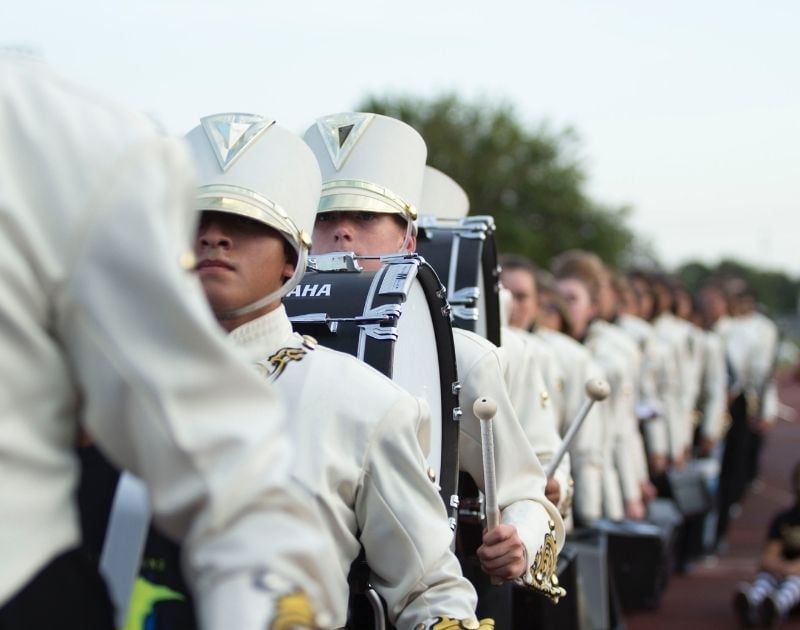 Imagine that you’re 15 years old, and your mom is picking you up from baseball practice. You’re tired and hungry, but on the way home, you spot a Chick-fil-A out your window. After asking if you can stop, your mom gives you the typical response, “No, we’ve got food at home.”
Imagine that you’re 15 years old, and your mom is picking you up from baseball practice. You’re tired and hungry, but on the way home, you spot a Chick-fil-A out your window. After asking if you can stop, your mom gives you the typical response, “No, we’ve got food at home.”
Although that answer is definitely disappointing in the moment, your parents have a lot more experience with making good financial decisions. Until you’ve lived on your own, you don’t realize how expensive fast food really is. Being in charge of your own finances brings a new perspective on your spending habits.
What you spend your money on is unique to you, but spending habits of students can also be based on experiencing different stages of life, such as being in high school or in college. Read below to find out the difference between when you’re living under your parents’ roof to when it becomes your own decision.
What are spending habits?
According to the Merriam-Webster Dictionary, a habit is defined as a usual manner of behavior that has become nearly or completely involuntary. When the word habit is put behind the word spending, it creates a term for the regular purchases that are necessary for daily life or for the purchases that are hard to give up. These spending habits are ingrained into your daily life, so most of the time, you don’t think about the purchase before making it.
Your spending habits usually will increase when your ability to buy more products and services increases. This is known as your spending power, and it typically increases when you have more money than you normally do from starting a part-time job or obtaining another source of income. With an increase in income, many people will expand their discretionary spending, or non-essential purchases. The increase in discretionary spending can make it easier to create more (potentially harmful) spending habits. These spending habits in high school vs. in college can depend on your source of income.
Where do students get their money?
Students in both high school and college earn money in a variety of ways. Some high school students may rely on an allowance, or money from their parents during their teenage years to cover any expenses. In fact, the Pew Research Center found that 44% of young adults received financial help from their parents in the past year. How students spend their allowance may vary. Other students may work after school and on the weekends in addition to completing their schoolwork. Still, other students choose to only work when school isn’t in session by getting a summer job, such as being a camp counselor, mowing lawns, or lifeguarding.
Similarly, there is a wide variety of income sources for college students. Just like in high school, some students are fortunate enough to receive an allowance from their parents. Other students rely on scholarships and grants as a source of income. Some full-time college students work either full-time or part-time jobs while they are enrolled in school. Many students also gain employment in the summer months when they are on break.
These sources of income help cover the basic costs of students’ living expenses. In the event that a student is unable to provide enough income to cover the costs of a college education, that person may have to take out a student loan to cover their basic living costs and financial habits.
 What do high school students spend their money on?
What do high school students spend their money on?
The spending behaviors of students are unique to each person, but these routine purchases can be influenced by those around you. Some of the top brands for teenagers according to a Spring 2025 survey were Nike, Bath & Body Works, Coach, and CeraVe, while a couple of the top places to shop were Amazon and Sephora. Although some spending habits are fun, like new shoes or video games, others are necessary for survival. Here’s a list of typical categories that high school students may spend their money on.
- Food
- Clothes
- Electronics
- School Supplies
- Extracurricular Fees
- Transportation
- Special Occasions/Fun
- Savings
When you fuel your body with snacks throughout the day, dress in the latest clothing, and purchase the newest technological gadgets, the cost adds up. On top of that, high school students often incur costs for school supplies, like pencils, notebooks, book bags, etc. Another expense is extracurricular fees in the form of club dues, team gear, and camps. Students also have to be prepared to pay for the fees for college preparatory tests.
Additionally, students often have to pay for transportation to get to school in the form of gas or bus fees. Special occasions, such as prom or an academic banquet, require even more money to attend. Finally, if there is any money left over, students will often save the remainder to help cover their cost of college in the future.
.jpg) What do college students spend their money on?
What do college students spend their money on?
From getting Starbucks on the way home from class every Tuesday/Thursday to making semester tuition payments, the spending habits of college students are diverse and unique. These habits can be influenced by others and are formed when you buy essential and non-essential items routinely. You can see the list of common purchases that college students make during the school year below.
- Tuition
- Rent
- Furniture
- Course Materials
- Food
- Transportation Costs
- Clothing
- Personal Expenses
- Fun
- Savings
Usually the largest expense, tuition is often the first cost looming over the average college student’s head. Plus, if you decide to attend a private university, you'll have to budget even more for your instructional costs. Whether you are living in a dormitory, an apartment, or a house, rent or room and board takes up another portion of the college student’s spending. Furnishing or decorating your living quarters may be another expenditure. Additionally, required course materials in the form of textbooks and school supplies are often purchased each semester or academic year.
According to EducationData.org, the average college student spends $672 on food per month in 2025. Many students can’t always rely on their parents to cover their food costs, so they may have to pay for a meal plan or buy their food at the grocery store. College students might have to pay for transportation to get from on-campus to stores or events off-campus. Out-of-state students and international students will have to purchase plane tickets for breaks and holidays. Besides other expenses for personal care, like hygiene and clothing, students attending college round out their expenditures with fun money used for eating out or shopping. Usually, the remainder of the money in a college student’s budget is saved in a bank account or emergency fund for future use.
How do I develop good spending habits?
As the average student knows, a habit is repeated behavior that is almost involuntary. When it comes to spending money, making purchases without thinking about what you are doing can become very expensive. For this reason, it is important to develop healthy spending habits and hone your financial literacy. These tips can help:
1. Set a budget
The practice of creating a budget for college is a skill that will carry over into the rest of your life. Tracking your spending patterns and limiting yourself to buying only what you planned for requires discipline, but will be rewarding when your savings account is a little more padded in the future.
2. Reduce impulse buying
It’s easy to see an item on social media and think you need to have it, but usually, you regret the purchase right after you make it. Taking time to think about the purchase before you rush into it will help you reduce your impulse buying and will save you money and space in your home.
3. Limit your credit card expenditures
Some items, like gas and groceries, are appropriate to put on your credit card. However, there are some purchases you shouldn’t make with your credit card. You should try to limit your spending to only items that you can pay off at the end of the month to avoid paying interest.
4. Focus on your financial goals
Although it is fun to go out to eat weekly and attend concerts often with your friends, sometimes, there is not room in your budget. Skipping some of those experiences now can help you reach your financial goals sooner. When you keep your long-term goals top of mind, it’s easier to make choices that move you closer to the future you want.
Although your spending habits can differ based on which stage of life you are at, there are some expenses that are required in every stage of life: food, shelter, water, and clothing. After those expenses are paid for, what you spend your discretionary income on is your choice. You will most likely be more conscientious of spending money on that new outfit or eating out for the fourth time this week when the money comes from your own checking account.
It is important to combat bad spending habits at a young age so that you are better financially prepared in your teens, early twenties, and throughout the rest of your life. Thinking back to the scenario at the beginning, instead of getting frustrated with your mother for not letting you get the Chick-fil-A after your practice, when you hear your mother tell you that you have food at home, just appreciate her monetary sacrifices and say “Okay, and I’ll even help you cook it.”










.jpg)

.jpg)


